On July 13, 2010, Emiliano Kargieman (EK) and Gerardo Richarte (Gera) founded Satellogic. As if they had planned it, the company's twelfth anniversary corresponds with many other particulars that also bear the number 12 — drawing on those coincidences, the Satellogic team asked longtime colleagues to share their favorite memories, having witnessed the company transform from a startup to a global leader in Earth Observation (EO) data.
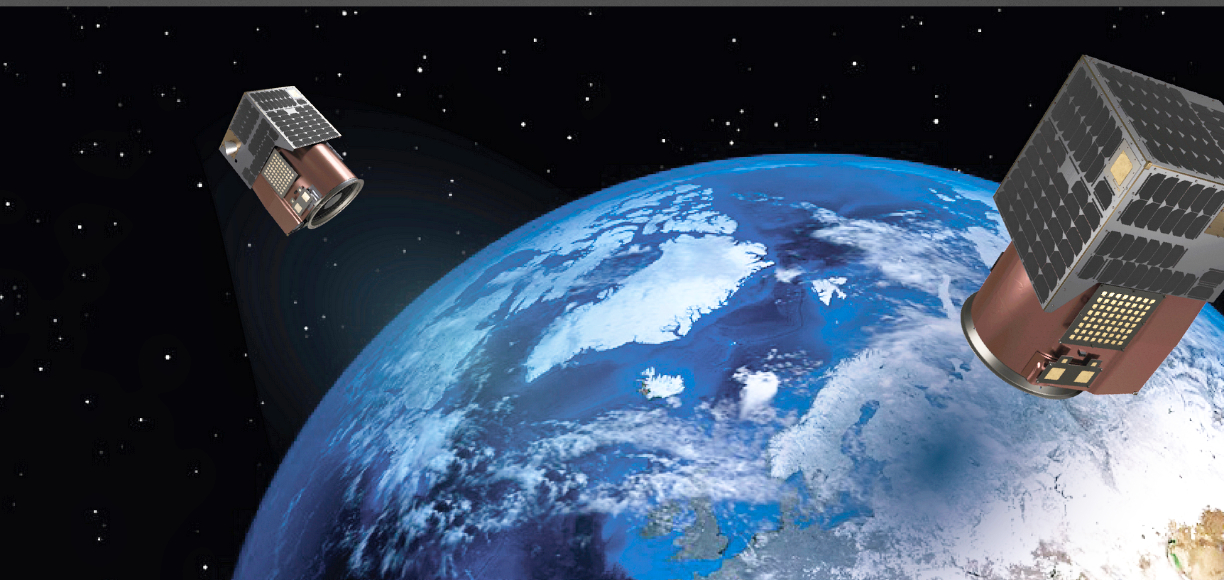
From naming the first satellites after a popular South American dessert, to meeting with former NASA technical auditors, the stories are a peek behind the Satellogic cleanroom curtain.
Twelve Missions
Satellogic launched the company's first satellite, CubeBug-1 (known as Capitán Beto), in April of 2013. We now have 26, high-resolution satellites in operation. In 2018, we inaugurated the tradition of naming our satellites after trailblazing women in STEM and the plan is to soon orbit many more satellites.
Twelve NewSat Models
Satellogic designs, manufactures and operates its own constellation of EO smallsats. To date, we have produced twelve versions of our NewSat model and are now sending the NewSat 12 model into space.
This is the twelfth iteration of a formidable undertaking that has seen the technical team upgrade the specs yearly, with 23 granted patents and 46 pending patents applications to this date.
Twelve Countries
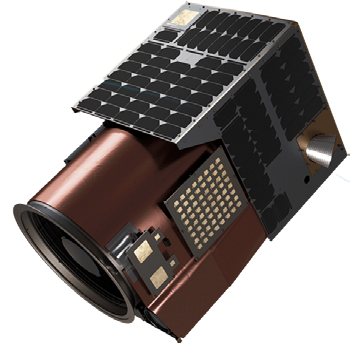
On the occasion of this auspicious, twelfth anniversary, Satellogic is proud to highlight that the firm now has employees operating within 12 countries, with venues ranging from R&D centers to Assembly, Integration, and Test (AIT) facilities across the globe, including the development of the firm's High Throughput Plant in the Netherlands which will drastically increase the company's production to achieve and maintain the goal of daily global remaps.
Keeping It Clean
David “Vila” Vilaseca, Research Director — since 2012 — offered his thoughts regarding Satellogic.
I remember the first image from a NewSat after working on the satellite's first generation camera and telescope. In particular, the telescope, which required a last-minute, complete redesign. This was a fantastic moment to see that all those endless nights and days finally paid off with a working satellite payload.
I can’t forget the first cleanroom in our offices on Roseti street — an unused attic, filthy, and falling apart. We purchased some tables and plastic sheets to wrap everything and and then built the homemade cleanroom.
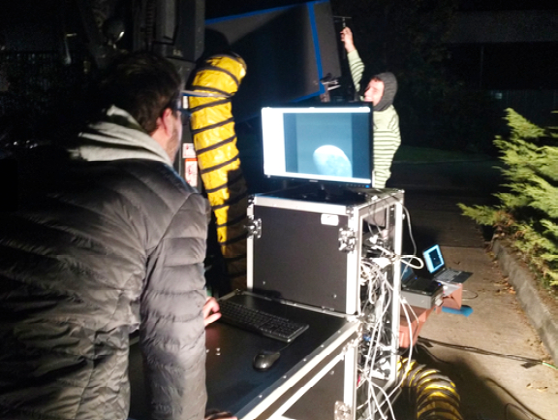
I think the cashier thought we were into some sort of nasty business. I also remember taking NewSat 3 out of the cleanroom to the clear sky to take pictures of the moon — our only chance to perform a wide field of view measurement on telescope quality. We didn’t have a collimator at that point!
Do You Want To Make Satellites?
Nicolás “Nico” Amaro, Program Manager in Mission & Operations — since 2013 — recalled...
I will never forget when Kharsa — Systems Engineer Alan Kharsansky — called me to join the team. I remember that day as if it were yesterday. I was in the university, and when I saw that Kharsa was calling, I answered, trembling, suspecting what was coming... and he said, “Hey Nico, how are you doing? Do you want to make satellites?!” My reaction was, “Are you kidding me? Where do I put my signature?”
We arranged an interview for the next day and he sent me the address of the famous Roseti office. By that time, I was daydreaming and simultaneously completely scared, as I knew almost next to nothing about satellites. I went to the office to meet Gera, expecting to meet him in an office with a sight of the river, pure white things, and all that stuff you can imagine from a fancy satellite laboratory. Well, Rossetti was the antipode of that laboratory.
When I arrived at the Roseti location, I double-checked the address to make certain I was at the correct address. I called Kharsa and told him something like, “Hey K, I’m outside… Is this the right address?” Rossetti was an old house where there was only one small room within which to do everything. I entered the room, said hi to everyone and knew that from this single room, a great deal of magic was spilling out.
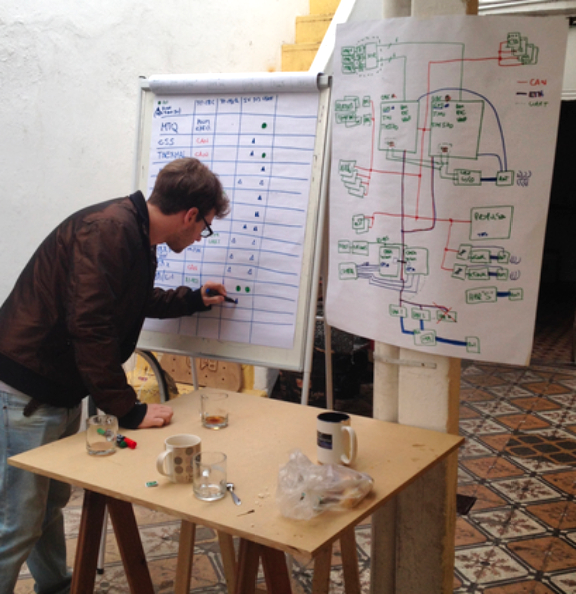
Vila was building the engineering model of Manolito (Cubebug-2). Gera was barefoot, as usual. And there were just two monitors for the entire team. Everyone was on their personal computer, making satellites, and developing projects using tons and tons of ingenuity. Gera interviewed me, told me about the project and how they were hacking the space, and finally offered me the job. When Gera told me what they were doing and how they controlled the technology, I felt like a kinder boy in front of giants. That was the first and the biggest lesson I learned about Satellogic and I remember every detail of that super day. I always keep this event in my mind, particularly when I interview someone to join the team.
The next day I started on this fantastic journey. By that time, we were more or less 10 in number and we had no space for everyone, so Gera was working on the floor without a desk. There we built the satellites Manolito and designed Tita.
This Ain’t Software
Gisela “Gise” Rabinowicz, Marketing Analyst — since 2013 — offered this revelation...
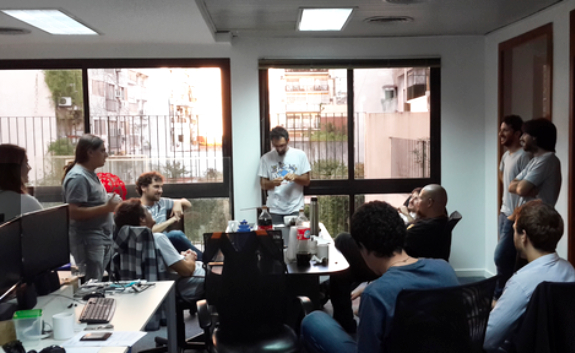
I knew EK, Gera, and Maxi from a previous job at a software company. We had worked together for several years until they left the company to create — from the ground-up, honestly — a new satellite-related firm. At that moment, I thought it was fascinating that they were pivoting from software to...satellites!
So as soon as I left that job, I called Maxi to tell him the news, and he said, “Come on Monday, we will work together again — only this ain’t software.” I arrived at the Satellogic offices, and, within minutes, EK entered the room and told us, “Listen, this company will be small — no more than 20 employees.” Or did he say 12? Not that it matters. Nine years later, that anecdote is amusing as we now have more than 400 Satellogic colleagues working across the globe.
During those early years, Satellogic taught me how to push my limits and how never to stop learning. All in all, Satellogic allowed me to grow as a professional and, most importantly, as a person. “Imagination Is More Important Than Knowledge.”
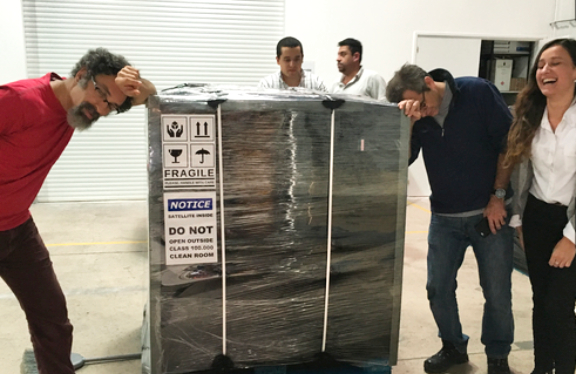
Maximiliano “Maxi” Waissbein, VP of Finance and Administration — since 2012 — offers his account...
I have two things in my mind — one personal, which was my job offering. EK contacted me and asked if I knew someone who could help him set up the Accounting, Finance, Legal, HR, and other operational functions for his new endeavor. I got back to him saying that all my friends who I would recommend were working, and the rest of my friends are my friends, but would never recommend them for a job (except perhaps for beer and wine testing). A few months later, he came back to me with the same question, and I got back to him with the same answer. EK doubled down and told me, “Well, then it should be you for the role.” One week later, I met with EK in Bariloche and started on this new, wonderful adventure.
The other element I have on my mind is our first cleanroom. The first cleanroom was in our office in Roseti street, in Buenos Aires. We needed a cleanroom, but we were far removed from having enough cash to build one. So, we assembled a homemade cleanroom in Roseti’s attic. As Einstein said, “imagination is more important than knowledge.” and that’s how we built the cleanroom. The entrance that prevented the dust from getting into the office and ensuring fresh air filtered in was similar to the one you can see in a butcher shop — plus, since it was summer, it was very hot, and we used a portable air conditioner to help cool things down (nevertheless, the team had the feeling of being in a sauna). The floor (thermostatic, best-of-breed) was a thick EVA floor mat identical to the one Lorenzo — my baby — has in his playroom. Under those conditions, we integrated our satellite, Manolito. I like this anecdote as it is a nice example of our “get it done” ethos that drove us back then.
Last, but not least, I remember when we discovered a potential new office in Scalabrini Ortiz street, where the Buenos Aires offices are located today. At that time, we had just started operations at Satellogic and we were about to launch one of our satellites. In one week, we needed to negotiate and close the lease deal, move out, and handle the office inauguration and launch party — the first event in Scalabrini Ortiz. We ran a lot with Gise and managed to get everything completed. After that event during our first week in the office at Scalabrini Ortiz, the carpet was comprised of bottles of wine office at Scalabrin and champagne.
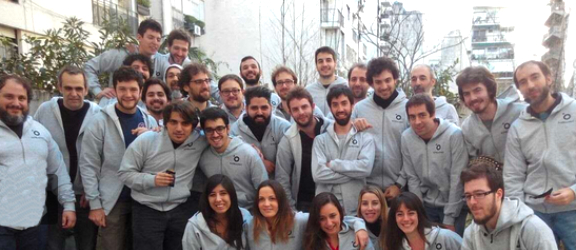
I Joined A Dream
Gimena “Gime” Ratto, Global Procurement and Logistics Manager — since 2015 — offers...
In 2015, we worked many hours, days, and nights with great enthusiasm to launch satellites Fresco and Batata — the name of a popular South American dessert comprised of cheese and sweet potatoes. The uncertainty, the adrenaline, the difficulty, and the shared dream, all made a small team quickly come together and build two satellites that were birthed from a new design into orbit, which confirmed the success of so much effort by the Satellogic team. In the beginning, we were small in number... there were no systems and no true procedures. I remember working on the small mechanics’ laboratory floor with Jose and Gise to check out the supply for Maite. Everything had to be created, and being part of that was what captivated me.
In no other job have I seen friends hug each other and cry emotionally for having achieved a goal. The difference between Satellogic and my previous jobs is that I joined a dream. We not only meet goals, but also dream and make them come true.
I remember a photo of my beginnings, with Jose — Program Manager Josefina Álvarez Toledo — and Gise — all of us sitting on the floor while having a meeting. It represents the spirit of that moment so well. There’s also a picture I remember, taken with Gera and Fede, with the satellites ready to go!
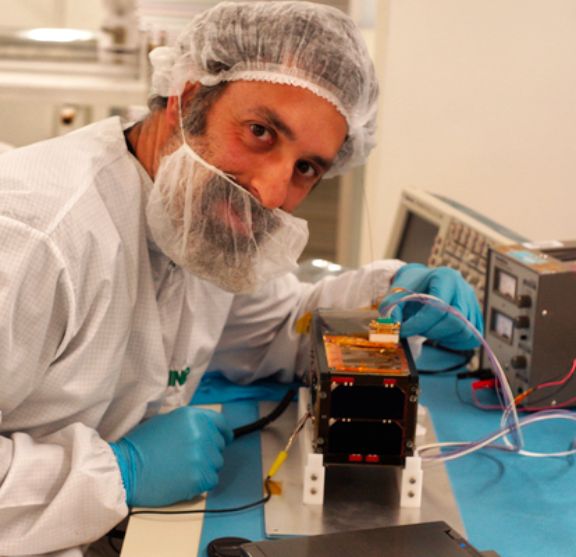
Do Satellites Dream Of Somersaults In Space?
Mariano Sternheim, Director of Design and Technology Strategy — since 2015 - notes...
In February of 2016, we launched NewSat 1 and 2, known as Fresco and Batata. The issue was that, at first, Fresco and Batata’s star trackers didn’t work. We quickly realized how to fix them for Milanesat — the upcoming satellite to be launched — but we needed to derive something for our satellites because the rest of the subsystems depended on us to perform their validations.
We came up with something we believed might work — we made the satellite spin! The Operations team nicknamed it the “somersault” — the satellite would spin three times (thereby orienting itself with Earth’s magnetic field) and then point to the target. That did it. With the “somersault,” we were able to hit targets with impressive accuracy. That was good enough to allow engineering to continue to move forward.
And We Like To Play Games
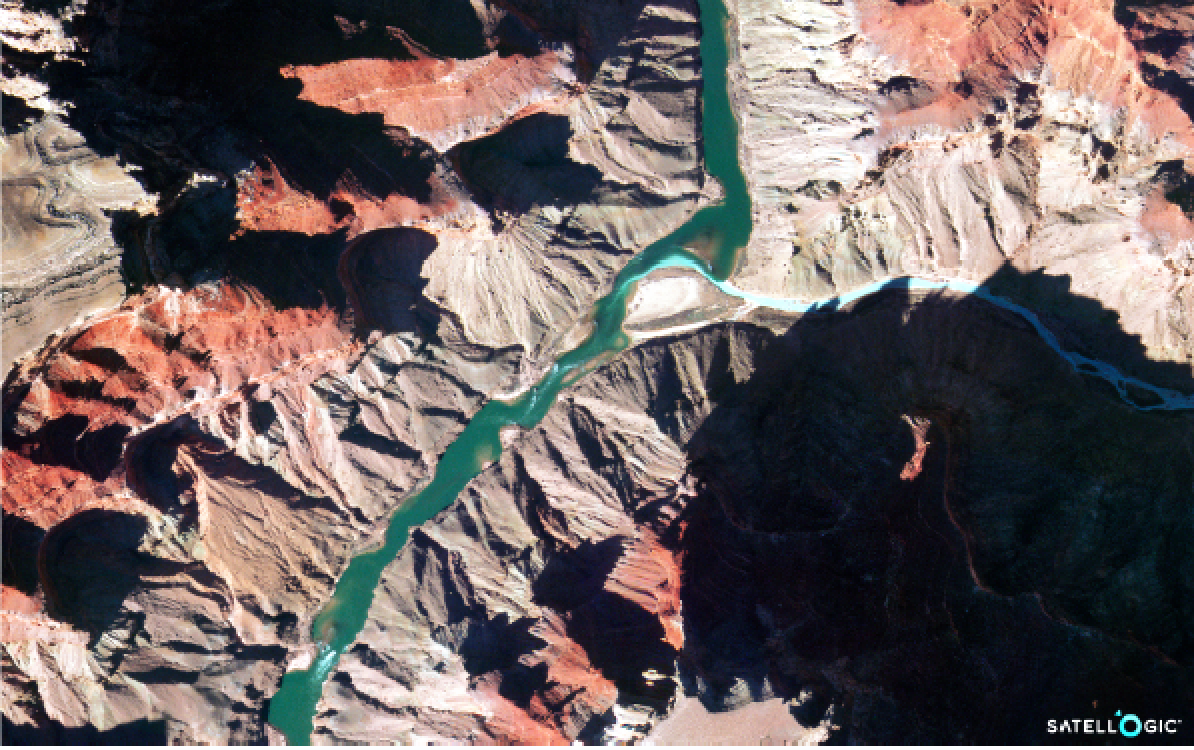 Satellogic satellite image capture of the Grand Canyon, USA.
Satellogic satellite image capture of the Grand Canyon, USA.
Gerardo “Gera” Richarte, Co-Founder and CTO — since 2010 — spoke of...
The early days were a brain rollercoaster, with an infinite number of things to learn and to solve. The first was to figure out if nature (or physics) would allow us capture awesome quality, sub-meter resolution images from a tiny, light, low-cost satellite. We had many ideas. For our satellites, light is not enough unless you play games with them, and we do like to play games. Usually, the problem disappears into another dimension once you find a solution. Still, this time, everybody was saying, “that’s not going to work,” so we had to think about it over and over again.
The first big, quasi-validation was during an early investment round, when a technical auditor flew to our office in Buenos Aires to meet with us and find out why our plan would fail — and miserably. I sadly don’t remember who it was, but he had tremendous credentials (Optical payload design for other satellites, NASA, etc.). I remember we shook hands before the critical meeting, and he said something like, “I know what you are trying to do; it’s not going to work.” Then, we had this important meeting. When he left, he said, “I like what you are doing, this is great, it’s a great idea; I look forward to seeing it working,” his eyes shining with enthusiasm, which he luckily expressed in writing to the investors.
Then came many additional adrenaline shots as we validated milestone after milestone, getting sharp and illuminated images, measuring (good) MTF, reconstructing color images, matching existing satellite images, capturing our neighborhoods, and finally, learning about the happy customers and getting validation from experts. However, I still remember that first eye-shining enthusiasm by a seasoned expert as one significant push that helped me gain enough confidence to push the limits and make it real.
If We Do It, It's Not Impossible... WE HAVE BEACONS!
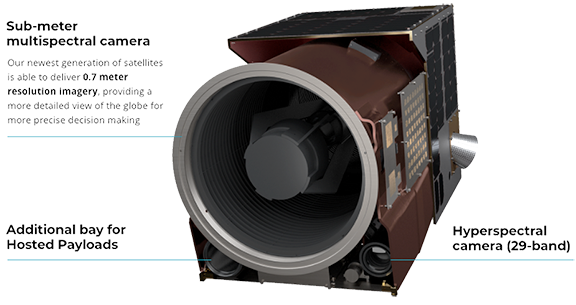
Sasha Hurovitz, Assembly Integration and Testing Engineer — since 2015 — recalled...
My most significant memory is a moment of realization. During the launch event of NewSat 1 and 2, everyone was excited, and after we heard “it was a successful launch,” all of us celebrated, and some of us went crazy! “We’ve put two satellites in orbit!”
Many of us… however, not all of us. Gera, EK, the comms team, and satellite operations (among others) were happy, but deep down, they seemed super serious. They continued like that for a while. And then, after what seemed to be an eternity, we heard those words, “WE HAVE BEACONS!” and at that moment everyone went wild! That’s when it hit me. The company itself didn’t place those satellites into when it hit me. The company itself didn’t place those satellites into orbit... that was the launch company’s job. That’s why Gera, EK and the crew didn’t celebrate at first, not until after the successful launch The years of struggle and the enthusiasm of many people who dedicated themselves to this project proved to be the success. “What is going to happen now?” we asked ourselves. I remember the first multispectral 64x64 pixel images of 64×64, the first stabilized images, the first HBR transmission, and the videos of airports. It was beyond my imagination — all the mission needed was a little push, that small step — the beacons.
Satellogic was my first job and I remember the interview with Gera and Vila who were eating ice cream at the time with their hands all dirty and I thought, “Alright, this is going to be a short-term job.”
Wrong...
Finding The Correct Plane
Pablo “Pablito” Jais, Systems Engineer — since 2013 — his reflections...
One of the milestones I fondly remember occurred when we were building NewSat-1 in March of 2016. We had a long and complex procedure for finding the correct plane to place the sensor. Not only was the process not yet validated — it was the first time we were using it — but we were working extremely long hours every day, so the possibilities of slipping up and making mistakes were quite high. We finished the procedure after several days and went back to the hotel to take a breather, but the mechanical team told us there was an error — the sensor was too tilted, according to their measurements. We went back to the clean room and repeated the procedure, now even more tired. Suddenly, to our surprise, the measurement gave us exactly the same result as before and it turned out to be a huge relief. This success gave all a great deal of confidence.
These memories of the early days and first triumphs are a reminder of where our vibrant company culture started, with great pride as we continue to be a team centered around curiosity, purpose and humility. Today we celebrate 12 years, 12 missions, a team that spans across 12 nations, and countless achievements between — this is merely the beginning...
satellogic.com


